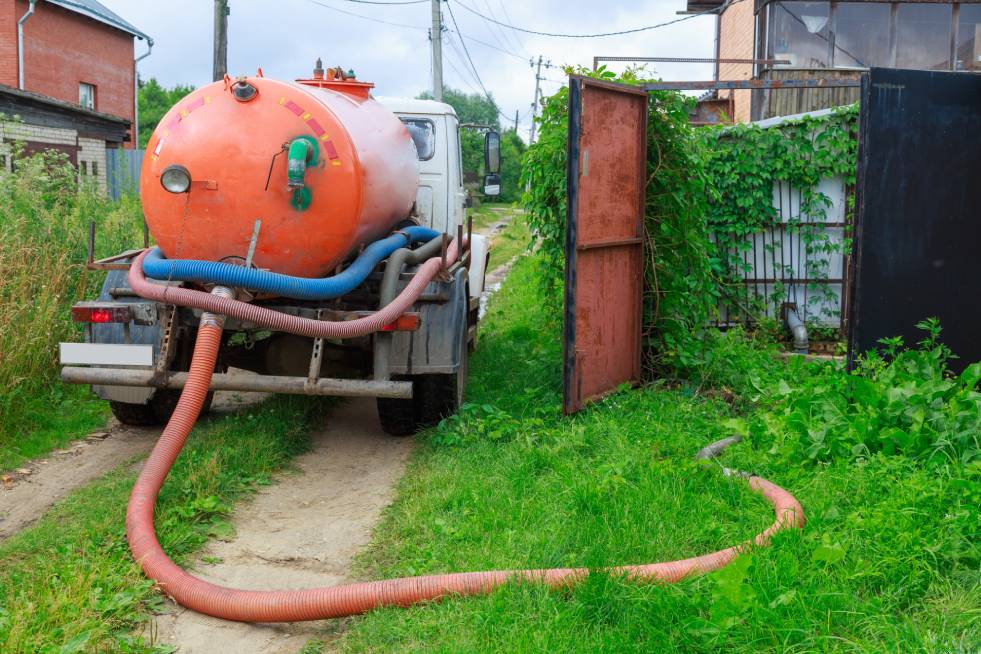For homeowners in Northern Virginia with septic systems, tree roots pose one of the most damaging threats. Seeking moisture and nutrients, roots can aggressively infiltrate septic pipes and even the tank itself, leading to blockages, leaks, and potentially catastrophic system failure. Understanding how to detect and prevent this common problem is important for maintaining your septic system’s health, and it’s a concern we at Great Falls Septic Service regularly address.
The Destructive Power of Roots
Tree and shrub roots are naturally drawn to the water and nutrient-rich environment of septic systems. Even microscopic cracks or loose joints in pipes can serve as an entry point. Once inside, roots grow rapidly, forming a dense mass that can:
- Block Flow: The root mass acts like a net, catching solids and restricting the flow of wastewater from your home to the septic tank, and from the tank to the drain field. This leads to slow drains, gurgling toilets, and eventually, sewage backups in your home.
- Crush or Break Pipes: As roots grow thicker, they exert tremendous pressure, which can crack, collapse, or completely displace septic pipes, leading to leaks and untreated sewage seeping into your yard or groundwater.
- Damage Tank Components: Roots can also penetrate and damage septic tank baffles or even crack the tank walls, compromising its structural integrity.
- Clog Drain Fields: If roots grow into the drain field pipes, they can permanently clog the soil’s pores, rendering the drain field useless and requiring expensive replacement.
How to Detect Root Intrusion
Early detection is key to preventing major damage:
- Slow Drains and Recurring Clogs: If you frequently experience slow-draining sinks, tubs, or gurgling toilets, especially in multiple fixtures, it could indicate a blockage in your main sewer line or septic pipes.
- Soggy Spots or Lush Green Patches: Unexplained wet areas or unusually vibrant green grass over your sewer lines or drain field can signify a leak caused by root damage, where wastewater is surfacing.
- Foul Odors: Persistent sewage smells in your yard, particularly near septic components, can also indicate a leak or backup due to root intrusion.
- Older Trees Nearby: If large, mature trees are growing close to your septic system, they are prime suspects for root issues.
- Professional Camera Inspection: The most definitive way to detect root intrusion is a professional sewer camera inspection. At Great Falls Septic Service, we can use a specialized camera to thread into your pipes, allowing us to visually identify root masses, cracks, or other blockages. This is often recommended if you suspect a problem.
Methods for Root Removal and Prevention
While root removal can be complex, prevention is always the best strategy for your Virginia home.
Root Removal (Professional Methods):
- Mechanical Augers/Snakes: For smaller root intrusions, our professional plumbers or septic technicians can use a motorized auger with cutting blades to physically cut through and remove roots from the pipes.
- Hydro-Jetting: High-pressure water jetting can effectively blast away root masses and other debris from pipes. This is often more thorough than snaking and can also clean the pipe walls.
- Excavation and Repair/Replacement: For severe root damage (cracked or collapsed pipes), excavation will be necessary to expose and replace the damaged sections of pipe. In extreme cases, a compromised drain field due to root intrusion may require partial or full replacement.
Root Prevention (Proactive Steps):
1. Strategic Planting:
- Know Your System’s Location: Always locate your septic tank, sewer lines, and drain field before planting anything.
- Minimum Distance: Plant trees at least 30 feet away from any part of your septic system. For aggressive water-seeking trees (like willows, poplars, cottonwoods, elms, maples), extend this distance even further.
- Choose Septic-Friendly Plants: Opt for shallow-rooted, non-woody plants and grasses directly over the drain field. Annual flowers, perennials, and groundcovers are generally safe choices.
2. Root Barriers:
- Consider installing physical root barriers (made of plastic or landscape fabric) between trees and your septic system during planting. These barriers direct roots downwards and away from your pipes.
3. Regular Professional Inspections: Schedule routine septic system inspections (every 1-3 years) with a licensed Northern Virginia septic service like Great Falls Septic Service. We can identify early signs of root intrusion or other issues before they escalate.
4. Repair Leaks Promptly: Ensure your plumbing is leak-free. Even small leaks can attract roots to your pipes.
5. Consider Septic Risers: Installing risers over your tank’s access points allows for easier monitoring and maintenance, making it simpler to detect problems early.
Protect Your Septic System from Root Invaders
By understanding the warning signs of root intrusion and taking proactive steps—especially through mindful landscaping and regular professional inspections—you can effectively protect your pipes, tank, and drain field. Don’t let aggressive roots undermine your septic system’s health. If you suspect roots are causing problems, or you simply want to ensure your system is safe, contact Great Falls Septic Service. We’re here to help Virginia homeowners with expert diagnosis, removal, and preventative solutions.


